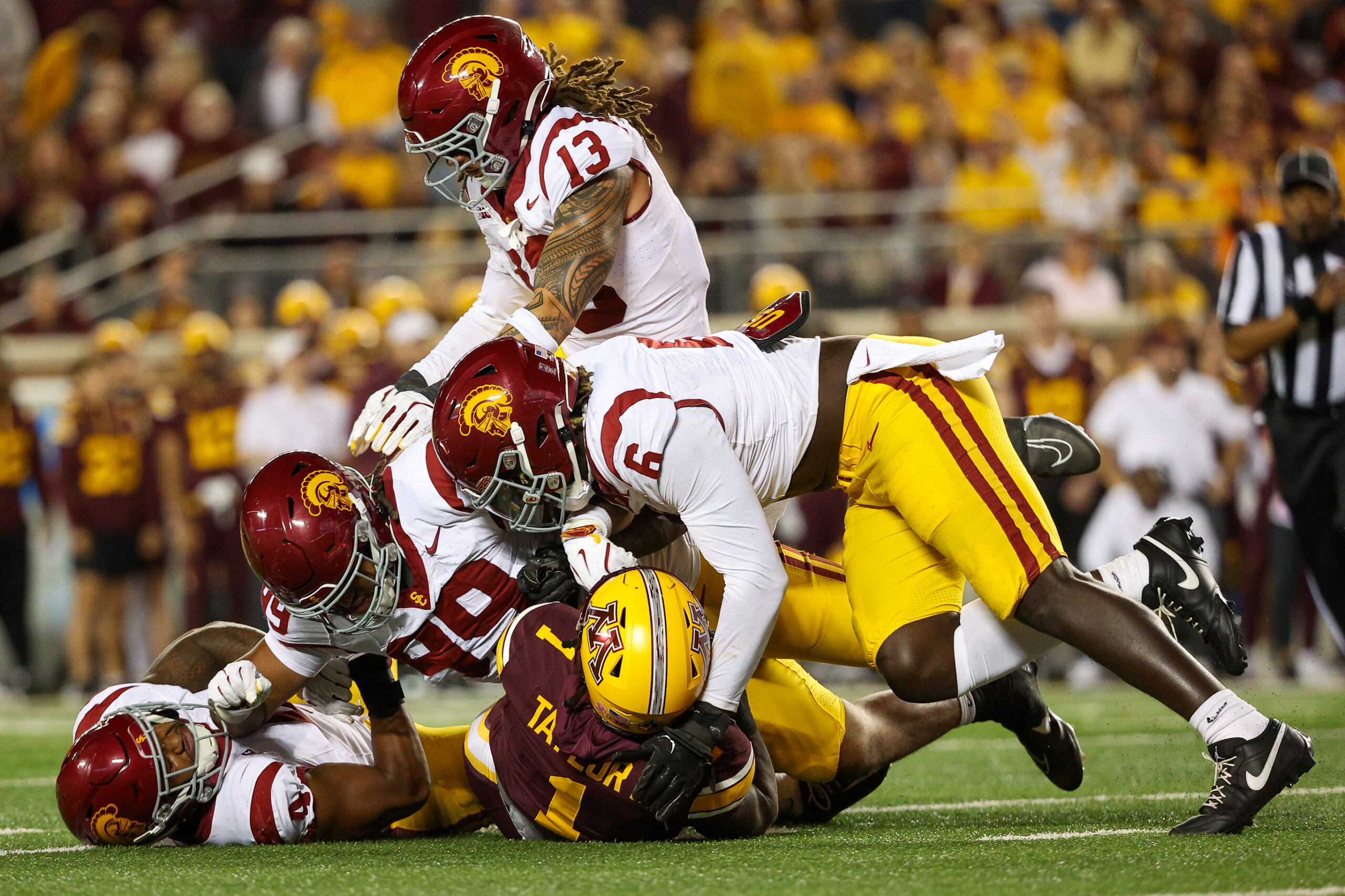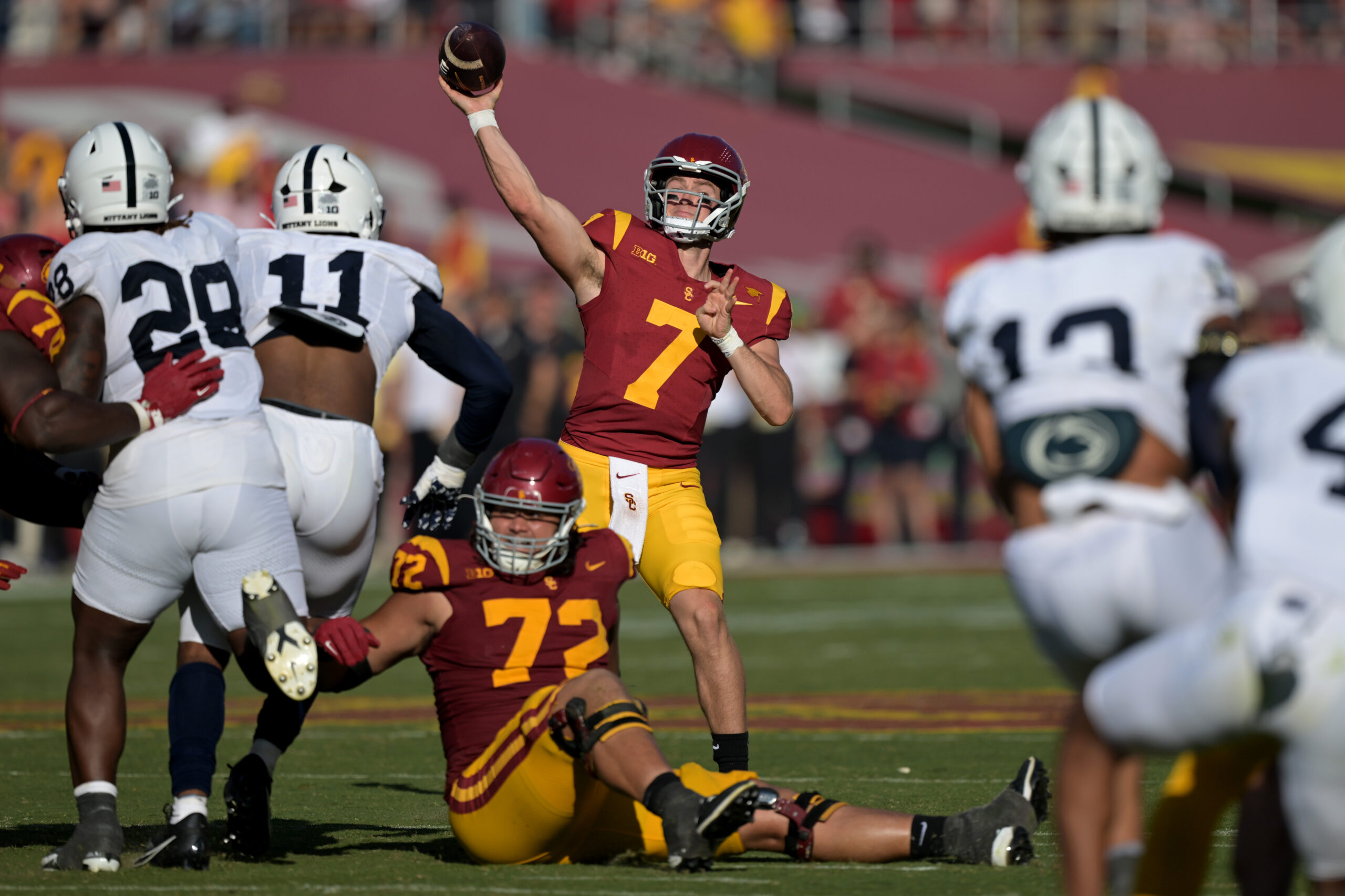A few days removed from the USC Trojans heartbreaking overtime loss to now #3 Penn State, has propelled much conversation about the program’s overall state. More specifically, whether USC is improving in year three of the Lincoln Riley regime and if so, how strong that trajectory is.
On the one hand, one could say the Trojans’ three losses have been by a combined 13 points, and in all three games, they held fourth-quarter leads with an opportunity to close victoriously. It’s certainly reasonable to state USC is three plays from being 6-0 and likely a top-five team nationally.
The problem with that chain of reasoning is that it’s embedded in emotion, bias, and hope. For instance, the same argument can be made in the other direction – if Wisconsin doesn’t fumble up 21-10 and if LSU’s Garrett Nussmeier makes the right read with under two minutes to go and hands the ball off to John Emery Jr. in the red zone, then the Trojans are also most likely two plays from being 1-5.
To objectively analyze the USC Trojans progress requires a data-driven approach rooted in the right statistics, and that begs the question, what are the valid metrics?
The Superficial Statistics For The USC Trojans

Most fans point to the top-level statistics as the compass for improvement. Those statistics are points scored per game, points allowed per game, yards gained per game, and yards allowed per game.
Particularly on the defensive side, the points and yards allowed per game relative to last year have been the linchpin of the justification for why D’Anton Lynn is doing a fabulous job. The problem with those statistics is that they’re not necessarily measuring performance, but rather tempo.
A conference like the PAC-12, or Riley’s heritage BIG-12, had teams play at a much faster pace with more possessions per game. A team will obviously yield more yards and points if they’re in an environment with more plays (just ask NBA experts statistically comparing today’s basketball with the 1990s and 2000s), as opposed to the slower-paced, more methodical style of play that is synonymous with the BIG-10.
Also Read: USC Trojans Trending To Flip Elite Defensive Lineman
Furthermore, the new clock rules in today’s college football, now resembling the NFL, have had an impact on shortening the game and limiting the number of plays.
Finally, other statistics like third down conversions and red zone percentages measure efficiency and opportunism more than pure performance, namely, are teams successfully executing the key opportunities presented to them over the course of a game.
How The Trojans Are Doing On The Stats That Matter

Given tempo and efficiency filtrations, the two purely normalized stats that measure performance are yards gained per play and yards allowed per play. These two stats don’t take into account the number of plays nor the relative importance of each play – rather, pure down-by-down output.
In 2023, the Trojans averaged 7.1 yards per play, good for 5th in the country. In 2024, USC is down to 6.2 yards per play, clocking in at 31st nationally.
For those watching, this statistic checks out – without the nonlinear improvision and explosive brilliance of Caleb Williams, the lack of emergence by a true WR1 in the form of Tahj Washington or Brenden Rice, along with Zachariah Branch’s inexplicable slump this season, the Trojans have lacked a break-the-top-off offensive dynamism to this season, resulting in more grind-it-out possessions without pure go-routes.
Related: USC Trojans Suffer Another Defensive Blow On The Defensive Line
On the defensive side of the ball, during the infamous Alex Grinch reign of 2023 which has been described as the worst in program history, the Trojans allowed 5.9 yards per play and ranked 93rd in the country.
In 2024, despite the new Lynn scheme, transformed strength and conditioning, along with a renewed emphasis on trench discipline and toughness, USC is still giving up 5.8 yards per play, good for 82nd in the country. There might be fewer penalties, sounder schemes, and slightly fewer missed tackles, but the defensive improvement from last year is only incremental.
When you factor in a moderate reduction in offensive performance with only an incremental gain in defensive output, the net result is a team that isn’t as good as last year’s version.
The data speaks for itself – the Trojans are going in slightly the wrong direction. Let’s see if the second half of this season can swing the pendulum back as a prelude to a massively significant 2025.
